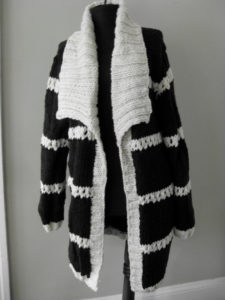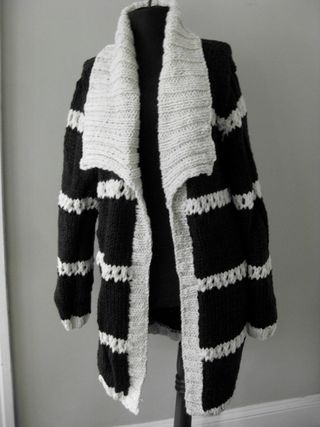Wondering how you can stay warm when the polar vortex and other cold winter weather strikes? I turn to wool, for everything from socks to sweaters to underwear.
CHOOSE SAFE AND HUMANELY PRODUCED WOOL

Plus, many farmers spray toxic chemicals directly on to sheep to kill other pests. Those chemicals may do more harm to the sheep than kill pests; they may also get into the surrounding environment and threaten the farm workers who are managing the sheep.
If the sheep are farmed in Australia or New Zealand, they may be exported to the U.S. or other countries before they’re shorn. According to Hearts.com, about 1% of those sheep die during the journey due to crowded, disease-infested ships and inhumane conditions. (In comparison, here’s how one Maine farmer raises his sheep organically and humanely.)
THRIFTING, SHOPPING & KNITTING YOUR OWN
Given how wonderfully warm and cozy wool is, many folks (including me) don’t want to give it up if we can find it made by a producer that makes the animal’s welfare a priority. Here are three options to consider:
Thrifting: Before buying new, head over to your local thrift or vintage store and check the sweater racks. Chances are you’ll find a gently used, warm woolen sweater at a bargain price. The advantage of buying used is that you don’t create a market for new, painfully produced wool. Plus, by extending the life of a gently used sweater, you maximize the value of all the resources used to produce it. It doesn’t hurt to save money buying used or vintage, either!
Shopping: If it’s a new sweater you want, check out these shops. All produce their products without mulesing their sheep or spraying or dipping them in pesticides. Look for labels that indicate the wool is both cruelty-free and organic.
Rambler’s Way – Makes women’s and men’s pullovers, long sleeve shirts, dresses, scarves and more.
Wool Works – Find short scarves, classic wraps and hand and leg warmers (they call them “spats.”)
LunaPortenia – An Etsy shop specializing in 100% organic wool that is hand spun and dyed with vegetables, leaves and roots. (see coat pictured above left)
Smart Wool – You can find their socks and tights in many boutiques and in outdoors stores. Online, shop for sweaters, jackets, scarves and underwear.
Knit Your Own: It may be easier to find ethical yarn and make your own hat, socks or sweater than to buy them. If so, you can get high quality, humanely produced, eco-friendly yarn and patterns from The Green Mountain Spinnery, The New Lanark Organic Wool Spinners, and O Wool, in addition to many other options.
Do you have a favorite humane and organic wool company? Or have you found another fabric you prefer to wool? Please let us know either way.
WHAT ELSE DO YOU NEED TO KNOW ABOUT THE POLAR VORTEX?
Is there a connection between the polar vortex and climate change? Here’s what I think.

















5 thoughts on “Fight the Polar Vortex With Warm Wool Sweaters and Socks”
Alpaca is very earth friendly and very warm! I will be getting some on my shop in 2014. It will be a cozy year.
Yes, Alpaca is a very warm yarn. I don’t know how the animals are sheared. Do you?
Thanks for the tips. I always buy alpaca clothes when I go to countries like Ecuador and Bolivia, as I assume that the relative lack of technology means a greener process all round. I have no idea how green the process in more devleoped countries
I’m not sure why you list Smartwool- it seems to be made with merino wool, which uses merino wool. Am I missing something? I won’t buy merino anymore, now that I know how it’s produced.
On SmartWool’s website (which is admittedly terrible to navigate, difficult to use, and altogether just a little too cute), here’s what they say: “We believe our sheep deserve to be treated well, and as part of that belief, we require contracted wool to be non-mulesed. SmartWool contributed to eliminating mulesing in New Zealand, and we won’t source wool from growers that practice it. We have also supported work by our partner, New Zealand Merino, to trace wool to the farm and to ensure every farm takes care of its sheep, its workers and its land. Of course, those things come naturally to a good grower — sheep, workers and land must all be supported to produce quality wool.” So yes, they use merino wool, but no, they’d don’t work with farmers who practice mulesing.
Comments are closed.